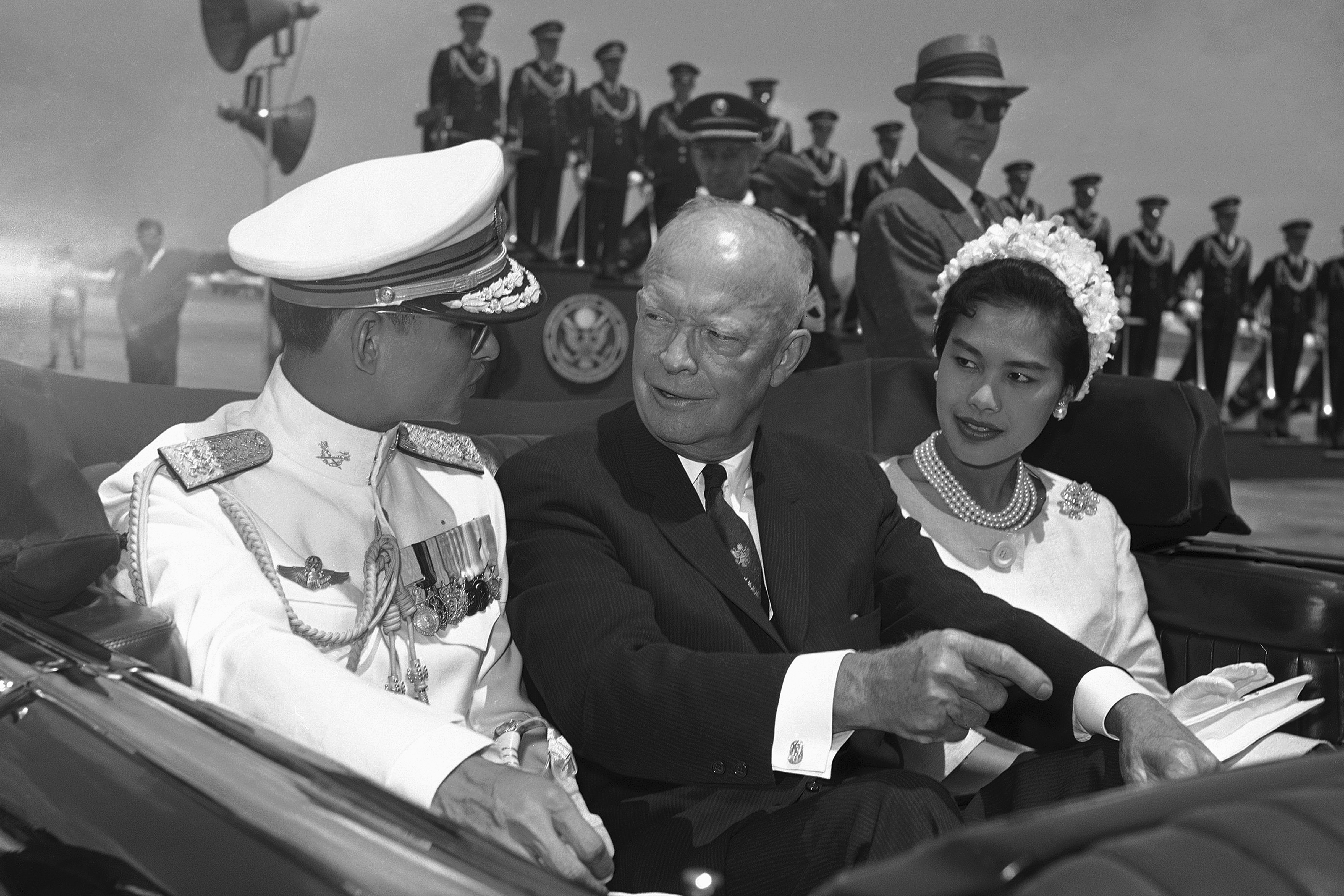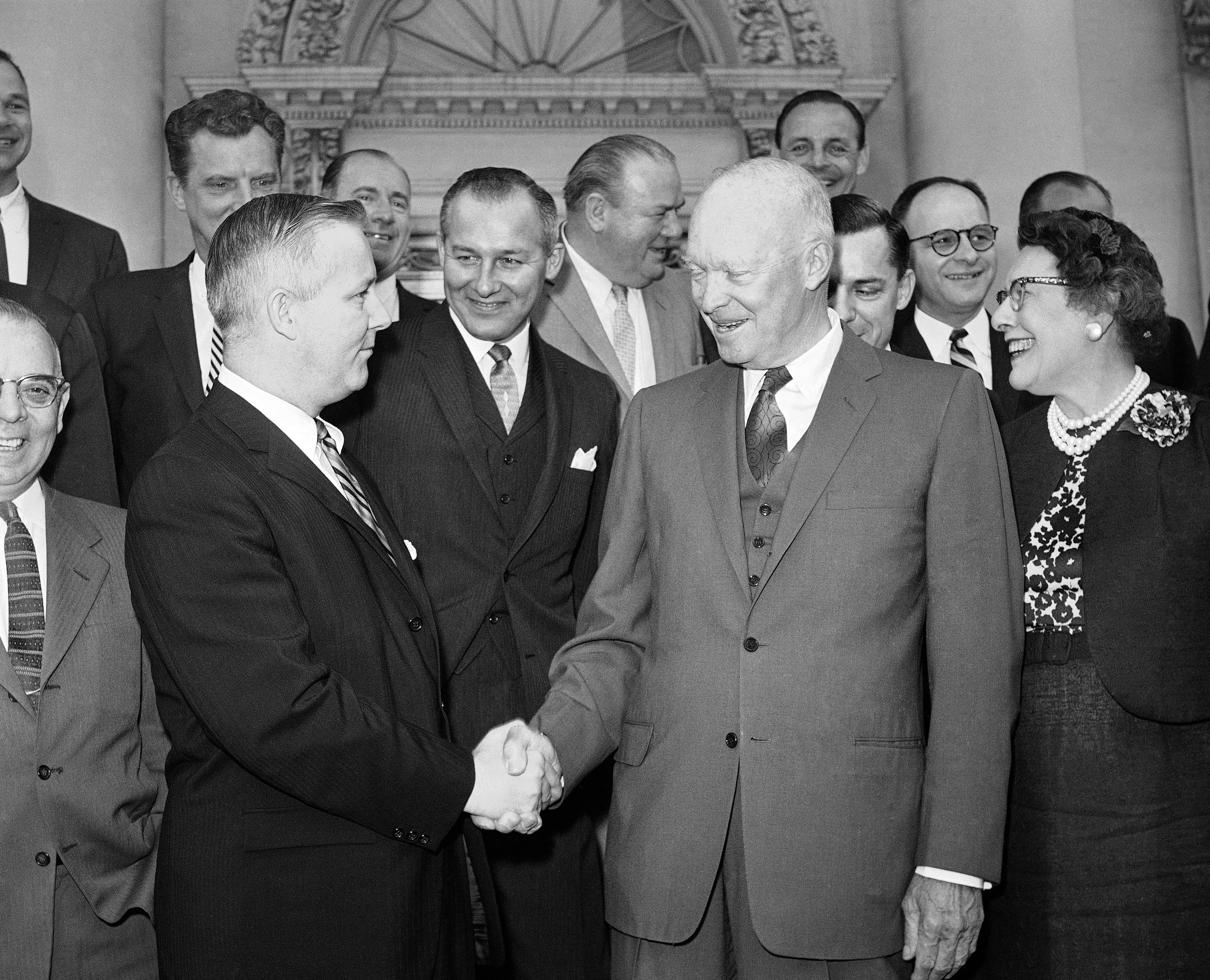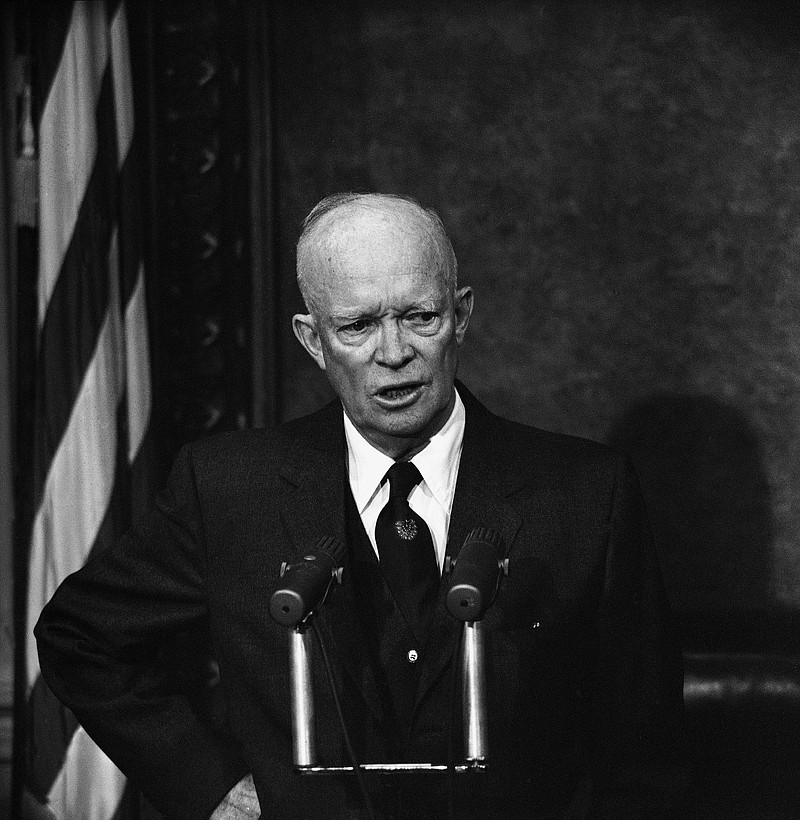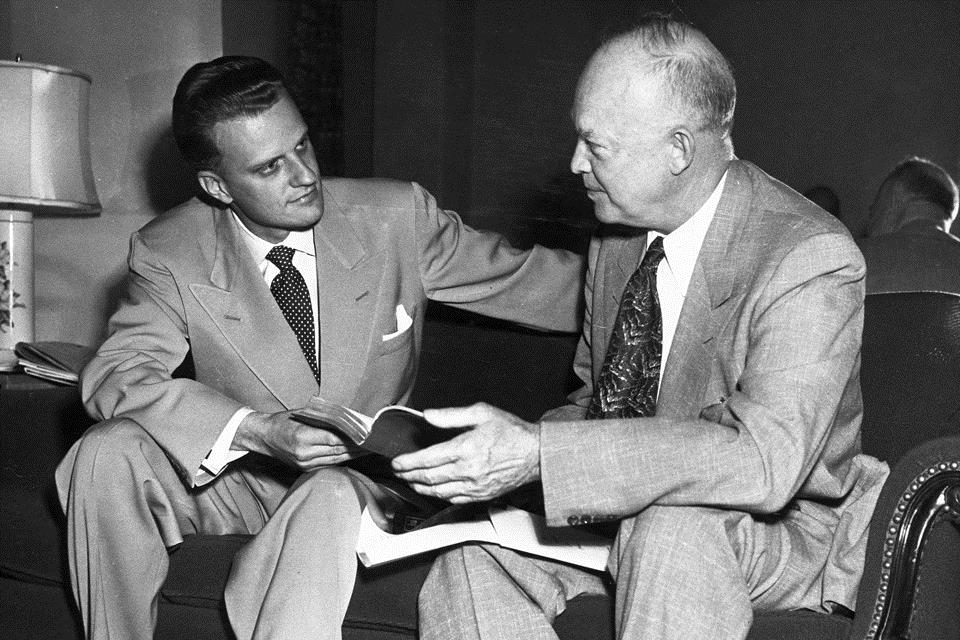Fifty years ago, on March 28, 1969, our 34th president, Dwight David Eisenhower, died at Walter Reed Army Hospital. As the 75th anniversary of D-Day landings of Allied forces on Normandy approaches, Eisenhower is celebrated for his remarkable military leadership in leading coalition forces in the invasions of North Africa, Sicily, mainland Italy and Western Europe. His planning and organizational skills, coupled with exceptional talents to inspire and to unite diverse forces with sometimes cantankerous leaders, were crucial to victories over Nazi Germany.
Eisenhower's presidential accomplishments are less appreciated. When he is mentioned in the present day, it is usually in association with the interstate highway system, the legislation for which he signed into law in June 1956. His many accomplishments, in a tense, complex decade, are superbly presented in "The Age of Eisenhower: America and the World in the 1950s" by William I. Hitchcock.
Following the end of World War II, Eisenhower served for two years as President Truman's chief of staff. Two years as president of Columbia University were followed by 15 months as the Supreme Commander of the North Atlantic Treaty Organization. In 1952, he announced that he was a Republican. He won nomination for president at that summer's GOP convention and won a landslide victory over Democrat Adlai Stevenson in November. Another landslide win followed in 1956. "I Like Ike" buttons were everywhere.
Eisenhower enjoyed a Republican majority in both houses of Congress during only the first two years of his presidency. Foreign policy enjoyed bipartisan support during his terms in office.
 FILE - In this June 28, 1960, file photo, U.S. President Dwight Eisenhower, center, is seated between Thailand's King Bhumibol Adulyadej, left, and Queen Sirikit for a motorcade drive from National Airport to the White House in Washington. Thailand's Royal Palace said on Thursday, Oct. 13, 2016, that Thailand's King Bhumibol Adulyadej, the world's longest-reigning monarch, has died at age 88. (AP Photo, File)
FILE - In this June 28, 1960, file photo, U.S. President Dwight Eisenhower, center, is seated between Thailand's King Bhumibol Adulyadej, left, and Queen Sirikit for a motorcade drive from National Airport to the White House in Washington. Thailand's Royal Palace said on Thursday, Oct. 13, 2016, that Thailand's King Bhumibol Adulyadej, the world's longest-reigning monarch, has died at age 88. (AP Photo, File) Some highlights of the Eisenhower years:
* In July 1953, his administration negotiated a truce in the Korean War which had raged from June 1950.
* In October 1953, Eisenhower appointed former California Gov. Earl Warren to serve as chief justice of the United States Supreme Court, a position which Warren occupied until his retirement in 1969.
In the landmark Brown vs. Board of Education decision of May 1954 the court unanimously ruled that segregation in public schools was unconstitutional. When Arkansas Gov. Orval Faubus blocked integration of Little Rock's Central High School in September 1957, Eisenhower ordered federal troops to enforce the court's ruling.
* In April 1953, the administration created the Department of Health, Education, and Welfare. Following the Russian launch of Sputnik in October 1957, Eisenhower proposed formation of the National Aeronautics and Space Administration, ratified in July 1958.
 FILE - In this May 12, 1960, file photo, President Dwight Eisenhower, front right, shakes hands with Rep. Arch Moore, of West Virginia, as he poses with a group of Republican congressmen after breakfast at the White House, in Washington. Moore, whose guilty pleas to federal corruption charges overshadowed his record as his era's most successful Republican in Democrat-dominated West Virginia, died Wednesday, Jan. 7, 2015. He was 91. (AP Photo/Bill Allen, File)
FILE - In this May 12, 1960, file photo, President Dwight Eisenhower, front right, shakes hands with Rep. Arch Moore, of West Virginia, as he poses with a group of Republican congressmen after breakfast at the White House, in Washington. Moore, whose guilty pleas to federal corruption charges overshadowed his record as his era's most successful Republican in Democrat-dominated West Virginia, died Wednesday, Jan. 7, 2015. He was 91. (AP Photo/Bill Allen, File) In 1957, the Administration sent to Congress legislation to protect voters' rights. Despite fierce opposition from Southern Democrats, including a record-breaking filibuster by Sen. Strom Thurmond, the legislation passed. The president signed it on Sept. 9th. The Civil Rights Act of 1957 established the Civil Rights Division of the Justice Department and a six-member Civil Rights Commission to investigate attempts by states to interfere with voting. The act empowered federal prosecutors to bring charges against local and state officials who interfered with voting.
In a thawing of tense relations with the USSR, Eisenhower invited Nikita Khrushchev to visit the U.S. in September 1959. A reciprocal summit in Moscow, scheduled for the following May, was canceled following the downing of the U-2 spy plane, piloted by Francis Gary Powers. After an initial denial, Eisenhower acknowledged that the U.S. had carried out such flights for years.
In a final action, the administration broke relations with Cuba in January 1961. Plans for an invasion of Cuba were quietly transferred to the incoming Kennedy Administration.
Eisenhower warned in his final speech from the White House of the threat of a "military industrial complex" which could, if unchecked, undermine American democracy.
Strong, calm leadership characterized Dwight Eisenhower's service as soldier and president. He retained the public's esteem after leaving office.
Contact Clif Cleaveland at ccleaveland@timesfreepress.com.

